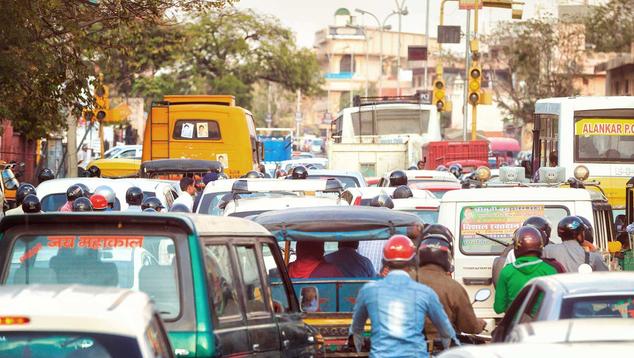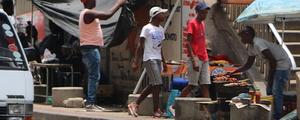The 17 goals that make up the United Nations Sustainable Development Goals (SDGs) build on the earlier success of the Millennium Development Goals and provide a framework for policymakers and others to use to focus global development ambitions. The 169 targets and 231 unique indicators that quantify each of the 17 goals provide a multidimensional lens to view the development challenges that each of the goals tackles.
The SDG indicators are extensive, but the indicators themselves do not have a hierarchy. This makes it challenging for policymakers to determine what needs to be prioritized. The Lloyd's Register Foundation World Risk Poll offers a potential solution to this problem because it asks people directly to identify what's most important to them -- what their priorities are.
In 2019, the World Risk Poll asked people in 142 countries and areas the following open-ended question: "In your own words, what is the greatest source of RISK TO YOUR SAFETY in your daily life?"
With road-related hazards topping the list, the World Risk Poll data clearly highlight the significance of SDG 11.2: "By 2030, provide access to safe, affordable, accessible and sustainable transport systems for all, improving road safety."

Bar chart. In 2019, the World Risk Poll asked people in 142 countries and areas to name their biggest source of risk in their lives. Road-related injuries were mentioned most often.
Despite some of the successes of the World Health Organization's decade of action for road safety, road traffic injuries are still the leading cause of death among young people aged 5 to 29. The World Risk Poll reinforces calls for a second decade of action, to double down on activities to address this self-identified greatest global risk.
Although road safety is the most frequently given response to the "greatest risk" question, residents of countries that have the lowest numbers of road traffic fatality rates per hundred thousand are those most likely to report road safety as the greatest issue.

Bar chart. Percentage worldwide who name road-related hazards as the top risk to their daily lives, according to country income group and traffic fatality rates.
The individual country-level data provide insights into what underpins this apparent contradiction. Madagascar, the country with the lowest levels of road safety reported as the "greatest risk," has 28.6 deaths attributable to road safety per 100,000, about six times greater than Finland, which -- at 4.7 per 100,000 -- is the country with the highest levels of road safety reported as the largest risk.
The prevalence of more-pressing risks to daily life in lower-income countries such as Madagascar helps explain why people in lower-income countries and territories were less likely to mention road-related risks than people in higher-income countries. People living in low-income economies often face extreme poverty, poor infrastructure and weak public services, all of which form relatively more immediate threats to safety in daily life than road- and traffic-related risks.
Therefore, these threats may overshadow road-related risks despite the statistics that show how many people are injured in road accidents. This is true in Madagascar, where crime and violence are the single-largest risks, with 30% of Malagasy mentioning them.
With 12% of people worldwide mentioning crime, violence or terrorism as their top risk, people in Madagascar are hardly alone in their concerns. It also illustrates why achieving SDG target 16.1, to "significantly reduce all forms of violence and related deaths everywhere" is so crucial, and why leaders need a laser focus on indicator 16.1.4 -- the proportion of the population that feels safe walking alone at night where they live.
Based on World Poll data that measure indicator 16.1.4, while Malagasy in 2019 were not the least likely in the world to say they feel safe walking alone at night where they live, they did rank 133rd out of 144 countries on this measure.
Implications
The United Nations' most recent progress report on its Sustainable Development Goals for 2030 maintains that, "conflict, insecurity, weak institutions and limited access to justice" remain threats to sustainable development. These threats have only been amplified during the COVID-19 pandemic in 2020, further jeopardizing the world's admittedly slow progress toward achieving "peaceful and inclusive" societies.
If the SDGs are designed to be a road map to achieve a better and more sustainable future for all by 2030, the World Risk Poll provides a complementary compass of how to navigate safely toward that destination.




